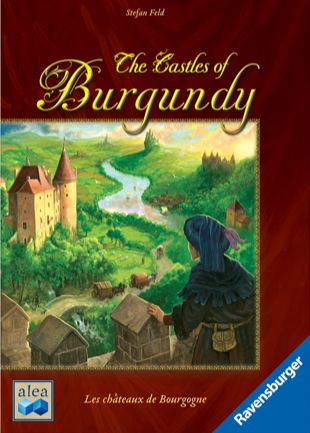The Castles of Burgundy (2011) Board Game
The Castles of Burgundy is a strategy board game designed by Stefan Feld and published by alea in in 2011. It has gained popularity for its unique combination of dice rolling, tile placement, and resource management mechanics. The game is set in the 15th century, where players take on the roles of aristocrats building castles, farms, and mines in the region of Burgundy, France.
Game Components of The Castles of Burgundy
How To Setup The Castles of Burgundy
To set up the game, each player receives a personal player board and a set of starting tiles. The main game board is placed in the center, and the supply of tiles, goods, and other components are organized accordingly. Players need to create face-down stacks of each color of tiles or use opaque bags to draw from, to ensure randomness. The game also includes various setup instructions to ensure all components are correctly placed before the game begins.
Gameplay Mechanics and Game Objective
Player Experience
The Castles of Burgundy offers a dynamic player experience with a mix of simple turns and deep strategic gameplay. Initially, players focus on building their own estates, but as the game progresses, they must also pay attention to their opponents’ moves to deny them valuable tiles and maintain turn order. The game is accessible to new players while offering complex strategies for experienced gamers.
Pros
Cons
Personal Thoughts on The Castles of Burgundy
The Castles of Burgundy is a classic that remains highly enjoyable even years after its release. It is ideal for fans of medium-weight Eurogames who appreciate strategic planning and tile placement mechanics. The game’s ability to cater to both new and experienced players makes it a versatile addition to any board game collection. While it may lack the flashy components of newer games, its depth and replay value ensure it remains a favorite among many board game enthusiasts.
We are supported by our audience. When you purchase through links on our site, we may earn an affiliate commission, at no extra cost for you. Learn more.

